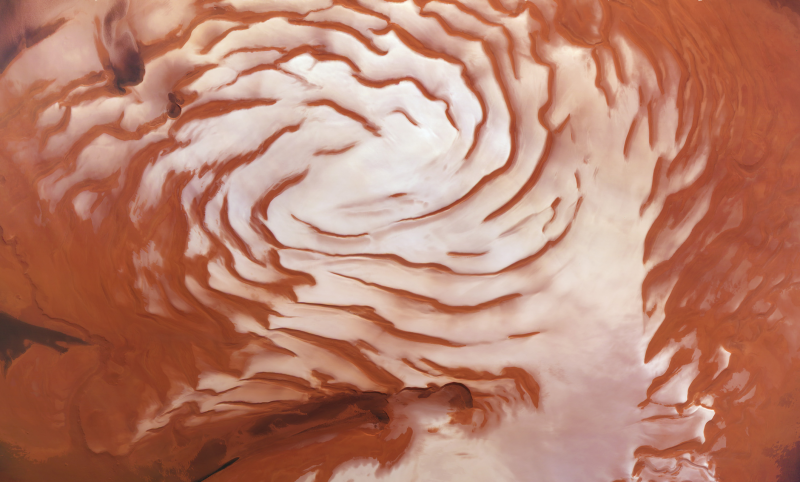
Good news, prospective Martian colonists: that frigid hellscape where you hope to spend out your days alone and in darkness is currently in a “warm phase.” Scientists are now reporting the first observational evidence that Mars recently emerged from an ice age, which can only mean one thing. It’s time to bring out the bombs and terraform that sucker.
Using ground-penetrating radar data collected by NASA’s Mars Reconnaissance Orbiter, a team of scientists at the Southwest Research Institute has unearthed strong evidence for accelerated accumulation of ice at Mars’ north pole in the recent geologic past. This discovery, detailed today in the journal Science, confirms what models have been predicting since the early 2000s: that the Red Planet’s most recent ice age ended about 370,000 years ago.
Like the Earth, Mars fluctuates between glacial and interglacial phases due to variations in the planet’s orbit as it circles the Sun. But on Mars, these so-called “Milankovitch cycles” are far more dramatic. While the Earth’s tilt varies approximately 2 degrees between glacial and interglacial cycles, Mars practically does somersaults, swaying back and forth on its axis by as much as 60 degrees. What’s more, thanks to neighboring Jupiter’s immense gravitational tug, Mars’ orbit becomes very stretched out, or eccentric, on timescales of about half a million years.
Advertisement
When changes in axial tilt and eccentricity combine properly, Mars has an ice age. But it isn’t quite what we’d expect based on ice ages here on Earth.
“During an ice age on Earth, the poles get colder, causing a buildup of ice that flows outward to cover Canada and northern Europe,” Smith told Gizmodo. “The reverse is true on Mars. As the planet increases its tilt, the poles get warmer.”
Sponsored
As a result, ice migrates away from the poles and toward Mars’ mid latitudes. That’s why, when Smith and his colleagues observed an uptick in the rate of accumulation of ice near the surface of Mars’ north polar cap, they knew that an ice age had to have ended recently.
From a human colonization perspective, this is very good news. Smith’s new study estimates there are approximately 87,000 cubic kilometers of dry ice locked away at Mars’ north pole right now. That’s a heck of a lot of frozen CO2, all buried in one place. If we took Elon Musk’s off-the-cuff advice and nuked the pole, we could probably make the atmosphere much thicker and warmer pretty quickly.
“The quickest way to increase the [atmospheric] pressure is by releasing that CO2 ice,” Smith said. “It won’t be enough for humans to live, but it’ll be a big start.”
And if terraforming Mars is the goal, there’s no time to waste. Smith reckons we’ve got 150,000 years before the next ice age kicks in.
Advertisement













